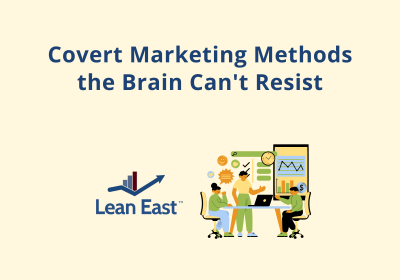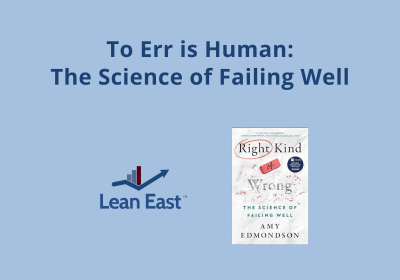To improve health care delivery in the United States, simplify the customer.
Lean Six Sigma focuses on maximizing value for the customer by removing waste from processes. The customer is then usually easy to identify. They purchase a product or service and expect that product or service to have the features they want, at the time they want it, while also having perfect quality at the lowest possible price. In a free market system, companies that provide customers the most value while also at the lowest cost are rewarded.
Our Client Organizations:
US-based health care, however, is not a free market system. Thus, making the customers in health care harder to identify and understand. Our Lean Healthcare East team has identified customers for our (United States-based) client organizations as:
| Client organization | Customer |
| Hospital and physician practice | The admitted patient for the service plus the payer (the patient and potentially an insurance company, employer who pays for the health insurance, Medicaid, Medicare, the hospital itself for charity care, etc.) |
| State Medicaid office | The Medicaid member and the taxpayer (represented by elected state representatives) |
| Federal Medicare, VA care, etc. | The Medicare member and the taxpayer (represented by elected federal representatives) |
| Doctor’s office | The patient and the many payers in the hospital list above |
| Nursing home | The patient and patient’s family plus the many payers in the hospital list above |
| Pharmaceutical or medical device supplier | The physician who uses or prescribes, plus the patient who receives the treatment, plus the direct payer (hospital/ pharmacy) plus the final payer from the many in the hospital list above |
In short, these customers don’t have alignment in their definition of value. Therefore, making it hard to maximize customer value and also eliminate waste. The United States is currently debating a proposal to replace the Affordable Care Act legislation from 2010. The replacement would be a Republican-sponsored bill titled, the American Health Care Act. Overall, neither of these systems simplifies the definition of customer. The remainder of this article will consider two alternative healthcare models that do simplify the healthcare customer.

Single-payer national health insurance
The book, The Healing of America by T. R. Reid, reviews multiple health care systems from around the world. Reid finds that “every developed country except the United States has designed a health care system that covers every resident.” He also learns that “every nation’s health care system reflects that nation’s moral values.” Reid reviews many statistics that show how the health of US citizens is worse than the health of most other citizens in industrial countries.
The “Medicare for all,” concept of single-payer health insurance mandates a governmental or quasi-public agency organizing health care financing. Meanwhile, the delivery of care remains largely in private hands. Currently, the customer in a national single-payer system is simply the resident and taxpayer. The national system will pool risks as is done for Medicare currently, but guarantee coverage for all. There are many sources that describe this concept well.
The typical issue raised about single-payer health care is that some residents will need more care than what they pay into the system as a taxpayer. Surely, responsible taxpayers don’t like to have their tax dollars pay for someone who may be unhealthy. Similarly, they don’t want to pay for someone who elects to utilize expensive emergency care unnecessarily. Other issues to single-payer national health care are also discussed as we examine the opposite alternative next.
Free market health care
I recently finished reading The Righteous Mind – Why Good People are Divided By Politics and Religion by Jonathan Haidt. In it, I found a great description of free-market health care. The book quotes an article by David Goldhill, a businessman whose father was killed by hospital inquired infection in 2007. Here is the direct quote from the book:
“In 2009, Goldhill published a provocative essay in The Atlantic Monthly titled “How American Health Care Killed My Father.” One of his main points was the absurdity of using insurance to pay for routine purchases. Normally we buy insurance to cover the risk of a catastrophic loss. We enter an insurance pool with other people to spread the risk around, and we hope never to collect a penny. We handle routine expenses ourselves, seeking out the highest quality for the lowest price. Never would we ever file a claim on our car insurance to pay for an oil change.
The next time you go to the supermarket, look closely at a can of peas. Think about all the work that went into it – the farmers, truckers, and supermarket employees, the miners and metalworkers who made the can – and think how miraculous it is that you can buy this can for under a dollar. At every step of the way, competition among suppliers rewarded those whose innovations shaved a penny off the cost of getting that can to you. If God is commonly thought to have created the world and then arranged it for our benefit, then the free market (and its invisible hand) is a pretty good candidate for being a god. You can begin to understand why libertarians sometimes have a quasi-religious faith in free markets.
Now let’s do the devil’s work and spread chaos throughout the marketplace. Suppose that one day all prices are removed from all products in the supermarket. All labels too, beyond a simple description of the contents, so you can’t compare products from different companies. You just take whatever you want, as much as you want, and you bring it up to the register. The checkout clerk scans in your food insurance card and helps you fill out your itemized claim. You pay a flat fee of $10.00 and go home with your groceries.
A month later you get a bill informing you that your food insurance company will pay the supermarket for most of the remaining cost, but you’ll have to send in a check for an additional $15.00. It might sound like a bargain to get a cartload of food for $25.00, but you’re really paying your grocery bill every month when you fork over $2,000.00 for your food insurance premium.
Under such a system, there is little incentive for anyone to find innovative ways to reduce the cost of food or increase its quality. The supermarkets get paid by the insurers, and the insurers get their premiums from you. The cost of food insurance begins to rise as supermarkets stock only the foods that net them the highest insurance payments, not the foods that deliver value to you.
As the cost of food insurance rises, many people can no longer afford it. Liberals push for a new government program to buy food insurance for the poor and the elderly. But once the government becomes the major purchaser of food, then success in the supermarket and food insurance industries depends primarily on maximizing yield from government payouts. Before you know it, that can of peas costs the government $30.00, and all of us are paying 25 percent of our paychecks in taxes just to cover the cost of buying groceries for each other at hugely inflated costs.
That, says Goldhill, is what we’ve done to ourselves. As long as consumers are spared from taking price into account – that is, as long as someone else is always paying for your choices – things will get worse. We can’t fix the problem by convening panels of experts to set the maximum allowable price for a can of peas. Only a working market can bring supply, demand, and ingenuity together to provide health care at the lowest possible price. For example, there is an open market for LASIK surgery (a kind of laser eye surgery that removes the need to wear contact lenses). Doctors compete with one another to attract customers, and because the procedure is rarely covered by insurance, patients take price into account. Competition and innovation have driven down the price of the surgery by nearly 80 percent since it was first introduced.”
The Issue:
Overall, the biggest issue with free markets is that this is not about a new pair of shoes or a new cell phone. This is about life and death. Will Americans stand by and let neighbors suffer and also die because they cannot afford care?
If you answer “yes” to this question, then what if that person is your son or daughter who was robbed and injured. What if he or she had no way to identify themselves and thus no way to pay for their emergency treatment?
If you don’t pay me what I demand, then is it okay if I let you die?
Free markets without regulation also struggle to deal with some basic economics. Free markets depend upon supply and demand balancing over time. But if I invent a drug that will save your life, then how much should I be allowed to charge you for it? If you don’t pay me what I demand, then is it okay if I let you die?
The US has also already experienced hospitals and other providers leaving rural areas where they believe they can no longer afford to exist. Free market health care could likely see these issues increase in the short term. This, however, would be until markets eventually learn how to service these different rural customers.
Simplify the customer
The most important thing we can all agree on is that health care is a complex issue.
While free-market and universal health care may seem like opposing solutions, both, however, simplify US health care. Overall, this is by more clearly identifying the customer and customer value. Both at least improve the health care value stream by simplifying payment processes for health care services.
| System | Customer |
| National single-payer | The patient and the taxpayer (through government insurance to pool risk) |
| Free-market | The patient is the payer |
In summary, combining free market benefits while providing care for everyone is not easy. Whatever we do, in order to improve health care delivery in the United States of America, then we must simplify the customer.




